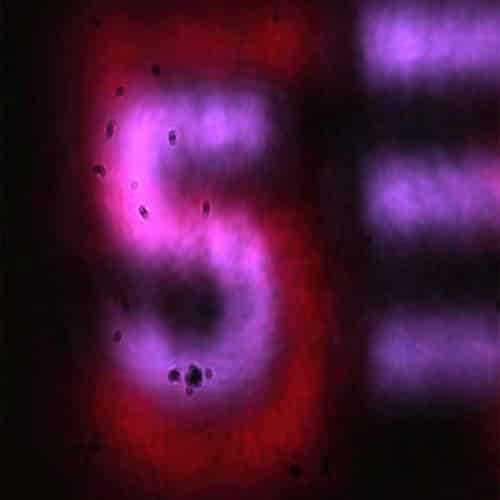Mid-infrared (mid-IR) light is rich with information. For cameras sensitive to this portion of the spectrum, cancer cells are sometimes easily spotted. The earth under our feet glows like a campfire. Many “invisible” gases like carbon dioxide, methane and propane are also very much visible in mid-IR.
This new realm of “colors” not available to the human eye may ultimately be coming to your smartphone camera, too. That’s if the research performed by Michael Mrejen, a research scientist at the the Femto-Nano Laboratory at the University of Tel Aviv, can be scaled up to commercial-grade consumer technology.

He says the device they’ve begun to develop could “bring ‘color’ mid-IR imaging to the masses and [offer] a window to a whole new wealth of data not available so far to the public.”
They can do this, he says, by “leveraging the widespread availability of cheap, high resolution, fast and efficient silicon-based [visible light] color sensors.”
Today, conventional mid-IR sensors are expensive, insensitive, operate below room temperature and lack the high resolution of mass-produced silicon camera chips.
Yet Mrejen and colleagues are pioneering a new technique that shifts mid-IR light to visible wavelengths that mass-produced silicon camera chips can detect. This way smartphones and other portable cameras might be able to include mid-IR light in their images.
Wavelength or frequency shifting is an old thing in the radio spectrum, where signals have been shifted between frequency bands for more than a century. Light wavelengths were first shifted soon after the invention of the laser.
Today, the light from green laser pointers is produced by doubling the output frequency of invisible infrared light from tiny lasers. Yet shifting light to non-harmonic frequencies is more difficult, and shifting multiple wavelengths to higher frequencies—or equivalently, to shorter wavelengths—is even more difficult.
The problem is that different wavelengths travel at different speeds through nonlinear materials, causing light waves with different frequencies to drift out of phase with each other, so little of the light is converted to the visible.
The only way to shift multiple wavelengths at once has been to shift one wavelength at a time. But that requires very sophisticated cameras too expensive for most users.
Seeking a better way to shift the mid-IR photons to a wavelength that silicon can see, Mrejen’s group relied on a nonlinear process his coauthor Haim Suchowski had previously developed that slowly changes the infrared waves into visible photons. This so-called adiabatic technique of frequency conversion, described in a recent issue of Laser and Photonics Reviews, compensates for the phase mismatch problem noted above.

Suchowski says he hopes mass-produced special crystals and pump lasers (altogether costing a few hundred dollars) that use this adiabatic frequency conversion trick could be mounted on smartphones.
“We humans see between red and blue,” Suchowski said in a press release. “If we could see in the infrared realm, we would see that elements like hydrogen, carbon and sodium have a unique color. An environmental monitoring satellite that would take a picture in this region would see a pollutant being now emitted from a plant, or a spy satellite would see where explosives or uranium are being hidden. In addition, since every object emits heat in the infrared, all this information can be seen even at night.”
Source: Spectrum










